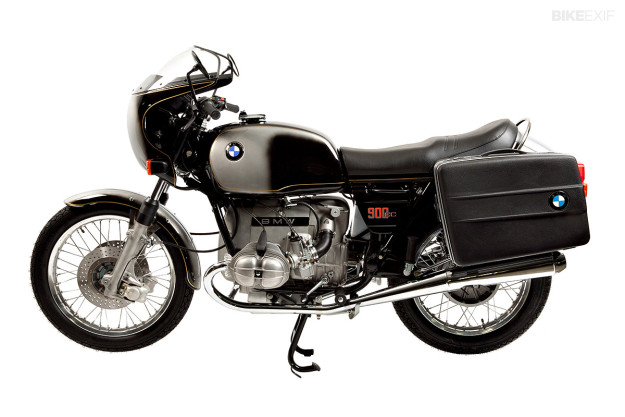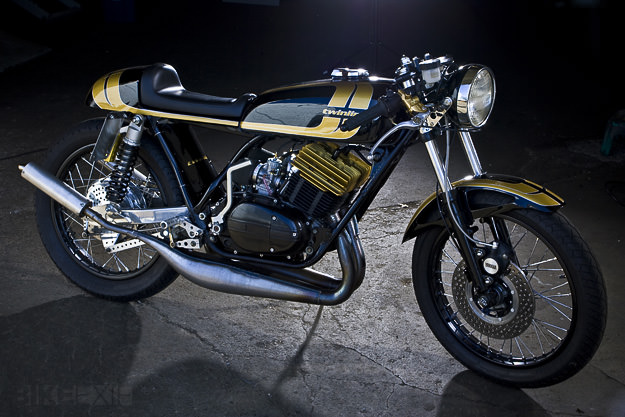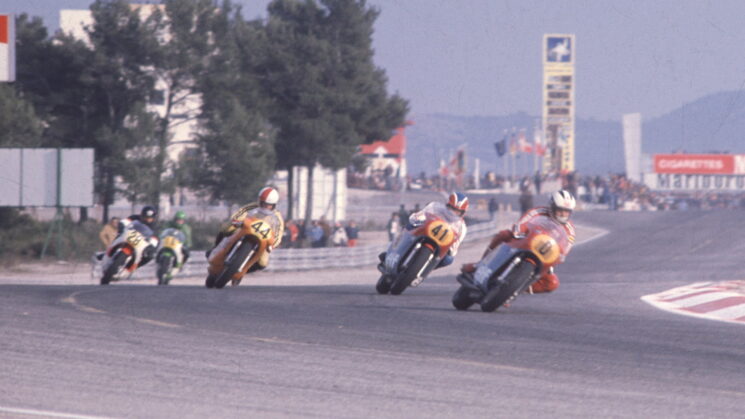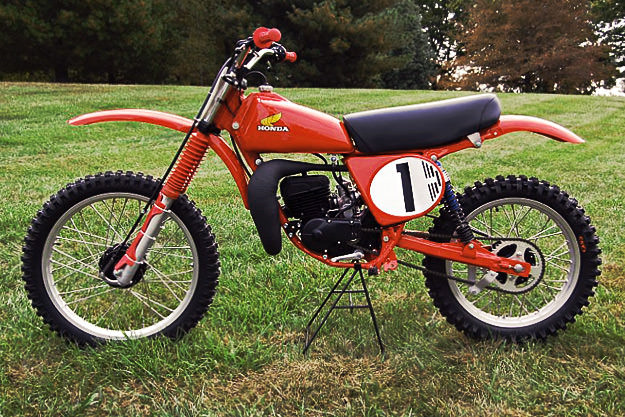
The early 1970s certainly were a golden era of motorcycling. Who can deny that the Kawasaki Z1 or H2, the original SOHC CB750 and the Ducati 750 Super Sport of the era aren’t icons? But the class of 1973 birthed some amazing motorcycles that have become classics.
From race bikes to dirt bikes, something was in the air in 1973. We were all about to face an oil crisis, the heights of the Cold War, and the headiness of the disco era. But for motorcycles, 1973 was a year that brought us these true classics that are now turning 50.
The BMW R90s
 Dear Hans Muth, thank you. Before Muth came along as BMW’s motorcycle designer, BMWs came in two colors: black or (occasionally) white. But in 1973, wow. The BMW R90S showed up and showed us that BMWs could be exciting with two-tone faded paint jobs, sportbike performance, and (gasp!) a bikini fairing.
Dear Hans Muth, thank you. Before Muth came along as BMW’s motorcycle designer, BMWs came in two colors: black or (occasionally) white. But in 1973, wow. The BMW R90S showed up and showed us that BMWs could be exciting with two-tone faded paint jobs, sportbike performance, and (gasp!) a bikini fairing.
The R90S backed up that groovy new paint job with a larger engine that was essentially a bored-out R75/5 engine. It made more power, more torque, and more smiles, and the R90S has gone down in history as BMW’s first superbike. Though the 1973 version is beautiful, later versions came in Daytona Orange, a color that Muth created to celebrate the bike’s win at Daytona in 1976. Muth went on to pen the R65 LS, the first R 80 GS, and later the futuristic Suzuki Katana sport bike, but the R90S could be his masterpiece.
Laverda 1000

We don’t hear much about Laverda these days, and that’s a shame. In 1973, Laverda made serious waves with the gorgeous 1000 that could top 135 mph. Laverda threw all of its mechanical wizardry at the three-cylinder 981cc mill, including a very Kawasaki-like double-overhead-cam design, to make a serious Z1 competitor.
Compared to today’s bikes, the 1000 was under-sprung, it had sketchy electronics, and weak brakes. In 1974, however, Laverda updated the bike with better brakes and forks, then the 1000 morphed into the Laverda Jota, the fastest production motorcycle of its era. Laverda showed that gutsy pilots could take a big, heavy, bruiser of a bike to unreal speeds and live to tell the tale. The 1000 was so good, it remained in production until 1988.
Yamaha RD350

I once had an RD350, and I can assure you that all of the good (and some of the bad) of these bikes is all true. There’s nothing like the rush of a two-stroke engine when it hits the power band, the smell of blue smoke, and the quick handling of the RD series bikes. Today, 39 horsepower doesn’t sound like a lot, but in 1973 it was plenty, especially when you factor in the bike’s super light weight of just 350 pounds.
The 1973 RD was a performance machine, the equivalent of today’s R6, and that was no mistake as RD stood for “Race Developed.” It grew into the RD400, and later the RZ350, while the Banshee 350 ATV used essentially the same motor through 2012. For pure motorcycling fun, it’s hard to beat the two-stroke RD for traditional gas-on, choke-on, hit-the-key and kick-it-to-life thrills.
MV Agusta 500 Four
 In 1973, street bikes were only part of the fun. There was intense competition on the race track, too. MV Agusta was trying to keep its winning streak alive despite major competition from new Japanese two-stroke bikes like the Yamaha YZR500, that was also new for 1973. Giacomo Agostini made MV Agusta famous for winning consecutive World Championship titles aboard the Tre, or the MV Agusta 500cc Three. But by 1973 it was clear that with a new rider in Phil Read, and more competition, that MV Agusta needed a new bike.
In 1973, street bikes were only part of the fun. There was intense competition on the race track, too. MV Agusta was trying to keep its winning streak alive despite major competition from new Japanese two-stroke bikes like the Yamaha YZR500, that was also new for 1973. Giacomo Agostini made MV Agusta famous for winning consecutive World Championship titles aboard the Tre, or the MV Agusta 500cc Three. But by 1973 it was clear that with a new rider in Phil Read, and more competition, that MV Agusta needed a new bike.
The company worked with its helicopter division to devise a four-cylinder four-stroke engine that seemed to fit Read like a glove. With two races to go in the season, Read had racked up enough points to win the championship on the new 500cc four-cylinder, and he went on to win in 1974, too. It doesn’t hurt, either, that the 500 Four is achingly beautiful to look at with its slab-sided fairing and that it sounds glorious.
Honda CR125

The CR125M was released in 1973 as a 1974 model and it set the dirt bike world alight. It’s hard to understate how important this bike was to an entire generation of people who learned to ride and race (like on the RC125 replica above) on this lightweight dirt bike. Honda as a company shied away from two-stroke engines, and Soichiro Honda famously said his company would never make a two-stroke dirt bike. But the CR125 came along anyway and put smiles on thousands of faces for 34 years.
Some say that the dirt bike boom of the 1970s and 1980s was created by the Honda CR125 because it was cheap ($750 new), reliable, and easy to ride fast. Of course, we’re not forgetting about the CR250M Elsinore that was also released in 1973. While that bike went on to racing success and a long career, too, the CR125M was so popular and so good, Honda produced it with only minor changes up until 2007.